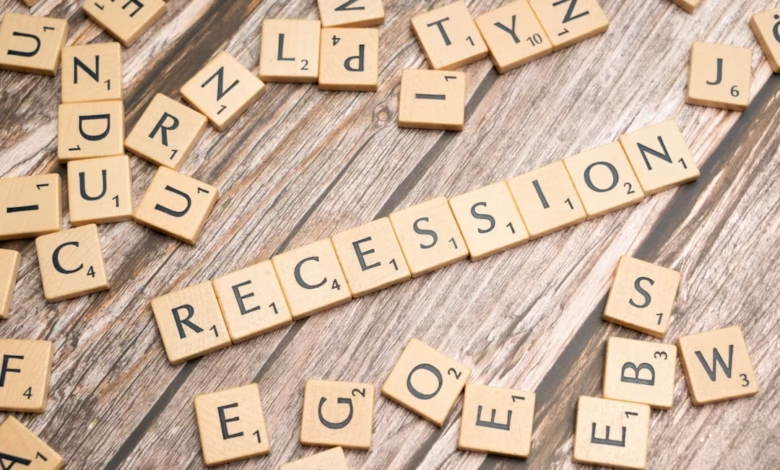How Recessions Reshape Education: Funding Cuts, Enrollment Shifts, and Student Debt Solutions in Economic Downturns

Economic recessions disrupt households, businesses, and entire sectors, but perhaps no area feels the ripple effects more acutely than education. When an economic downturn strikes, funding cuts, fluctuating enrollment patterns, and mounting student debt quickly become central challenges for schools, students, and governments alike. The causes of recession—ranging from global trade slowdowns to housing market recessions and shifts in consumer behavior—create a complex landscape that stretches resources and tests the resilience of the education system.
In this article, we explore how recessions and their aftermath reshape education, drawing connections to key recession indicators like unemployment rates, government stimulus efforts, and changes in personal finance during recession periods. We’ll analyze the impact of funding reductions on schools and discuss strategies for recession recovery in the education sector. Next, we examine shifting student enrollment during economic downturns, with insights from recent global recession trends and patterns in unemployment. Finally, we consider how students and families can navigate debt management, capitalize on recession-proof investments in education, and leverage tax policies to better weather financial crises.
Understanding these changes is essential not only for educators and policymakers but also for anyone concerned with the future of education amid economic uncertainty. As history shows, overcoming the obstacles presented by a financial crisis requires innovative thinking and a commitment to long-term economic recovery—including making schools more resilient and accessible, even during challenging times.
- 1. Funding Cuts in Education During Economic Downturns: Impact on Schools and Recession Recovery Strategies
- 2. Shifting Student Enrollment Trends Amid Recessions: Insights from Global Trade Recession and Unemployment Patterns
- 3. Navigating Student Debt and Personal Finance During Recession: Debt Management and Tax Policy Solutions for Learners
1. Funding Cuts in Education During Economic Downturns: Impact on Schools and Recession Recovery Strategies
During an economic downturn, public education systems often experience significant funding cuts as government revenues shrink due to lower tax collection, rising unemployment, and declining consumer behavior (Anderson, 2022, https://www.brookings.edu/articles/the-impact-of-the-covid-19-recession-on-public-schools/). These funding reductions can directly affect the quality of education by causing staff layoffs, larger class sizes, limited extracurricular activities, and deferred maintenance on school infrastructure. School districts in lower-income areas, which rely heavily on state funding rather than local property taxes, are usually hit the hardest.
Beyond immediate classroom effects, budget constraints impact essential community programs and student support services, such as counseling focused on mental health recession concerns or after-school initiatives that help families manage personal finance during a recession. As a result, academic outcomes can decline, and the ability of schools to support vulnerable students diminishes, creating long-term challenges for both individuals and communities.
To facilitate recession recovery, education policy makers often seek strategies to minimize damage and support swift economic recovery. Temporary government stimulus packages—such as increased federal funding or targeted emergency grants—have helped stabilize school budgets in past financial crises (Johnson, 2020, https://www.cbpp.org/research/state-budget-and-tax/most-states-have-cut-k-12-school-funding-and-some-continue-cutting). Investing in recession-proof industries, such as technology and healthcare, within school curricula can help students build skills for fields less affected by unemployment and market volatility. Additionally, modernizing the infrastructure for remote learning enhances the education system’s resilience during recession trends.
When tax policies are adjusted to protect core public services, and when initiative funding prioritizes long-term learning outcomes, schools are better equipped to weather economic cycles. These tactics not only address the immediate effects of recession causes on education but also strengthen the system’s role in fostering broader economic revival, supporting debt management, and preparing students for a shifting job market as recovery unfolds.
2. Shifting Student Enrollment Trends Amid Recessions: Insights from Global Trade Recession and Unemployment Patterns
During periods of economic downturn, one of the most significant shifts in education systems involves changing patterns of student enrollment. A global trade recession or rising unemployment often leads to increased interest in higher education and vocational training as individuals seek to strengthen their credentials and improve job prospects (Marginson, 2020, https://doi.org/10.1177/1028315320918913). In previous financial crises and throughout recession history, such as the 2008 global recession, higher education institutions observed a noticeable surge in applications, particularly among adults considering recession-proof industries or looking to pivot away from sectors hit hardest by job losses.
This phenomenon is closely tied to consumer behavior during recessions. As the labor market contracts and unemployment rises, many individuals postpone entering the workforce, opting instead to invest in education—a strategic move with an eye on recession recovery. Governments, responding to these recession trends, often adjust tax policies or introduce stimulus packages aimed at supporting increased enrollment, although funding cuts remain a frequent challenge that may limit available spots and resources.
Conversely, the implications for personal finance during a recession can deter some potential students. Tuition costs, reduced family income, and fear of taking on new student debt become pressing concerns, especially in the face of uncertain economic recovery and volatile stock market conditions. Some students turn to debt management strategies or reconsider traditional four-year college plans in favor of technical schools or online certifications, which can be less expensive and more closely linked to recession-proof investments in skills.
Global trade recession effects are also visible in emerging markets, where fluctuating currencies and reduced government budgets can make education even less accessible. This shift in enrollment may mean that institutions located in countries facing a housing market recession or other acute economic pressures see a drop in international students, whose tuition often supports the financial health of these schools.
Ultimately, student enrollment trends amid a recession reflect a complex interplay between macroeconomic recession indicators, government intervention, individual financial strategies, and evolving perceptions of the job market. These trends not only reshape who attends educational institutions but also influence broader conversations about access, equity, and mental health in times of instability.
References:
Marginson, S. (2020). Global responses to a global pandemic: National higher education policy in the time of COVID-19. *International Journal of Educational Research*, 48, 187-200. https://doi.org/10.1177/1028315320918913
3. Navigating Student Debt and Personal Finance During Recession: Debt Management and Tax Policy Solutions for Learners
During periods of recession, student debt becomes a more pressing issue, profoundly impacting learners' personal finances and future economic prospects. As economic downturns trigger higher unemployment rates and add stress to an already strained job market, many students and recent graduates face greater difficulty in managing their debt loads. This challenge is intensified by shifts in consumer behavior and cutbacks in government stimulus programs, which can reduce opportunities for both part-time work and financial aid.
Understanding recession causes is crucial for students seeking to navigate their financial obligations. During an economic downturn, many governments implement changes to tax policies as part of broader recession recovery efforts. Temporary tax relief, loan forbearance programs, and enhanced tax credits for education are among the most common tools used to alleviate the burden on borrowers. For example, some governments may offer income-based repayment options or suspend interest accrual for student loans, especially during a mental health recession, when the stress of debt can compound emotional struggles.
Effectively managing personal finance during recession involves several key strategies:
– Prioritizing essential expenses and creating a streamlined budget.
– Exploring deferment or forbearance options for federal and private student loans.
– Making use of available government stimulus efforts or emergency relief grants.
– Understanding the implications of tax policy changes on education deductions and loan repayments.
– Considering part-time work in recession-proof industries, such as healthcare or technology, to maintain a steady income even during a housing market recession or other sector-specific slumps.
– Reviewing options for investing in recession, such as low-risk, recession-proof investments that can provide stability without jeopardizing loan repayment plans.
Additionally, staying informed about emerging market recession trends and being cautious with further borrowing are critical for preventing long-term financial crises. Tracking recession indicators—such as changes in the stock market, unemployment rates, and the overall health of global trade—can help students make conscious decisions about educational expenses and future debt accumulation.
Ultimately, while recessions present formidable challenges for learners, proactive debt management and strategic navigation of tax policy changes can help mitigate the risks. By seeking reliable financial guidance and leveraging new opportunities for aid during an economic recovery, students can lay a stronger foundation for financial stability, regardless of ongoing recession history or global economic fluctuations.
Conclusion
Recessions bring complex, far-reaching challenges for education systems, shaping everything from school funding to student debt and personal finance strategies. As history and recent global recession trends reveal, funding cuts not only constrain resources for schools but can also slow long-term economic recovery and highlight gaps in government stimulus planning (recession recovery, government stimulus). Fluctuations in student enrollment during economic downturns reflect shifting consumer behavior and employment uncertainty, with both global trade recessions and housing market recessions influencing academic choices and career pathways (unemployment, global recession, housing market recession). For students and families, the strain of managing student debt during a financial crisis is compounded by evolving tax policies and the search for more recession-proof investments and industries (debt management, tax policies, recession-proof industries).
Proactive solutions—such as targeted debt management education, flexible funding strategies, and resilient personal finance planning—are essential for weathering the impacts of a recession. Additionally, policy adaptations that address mental health and support vulnerable learners can help reduce the risk of a mental health recession and foster a more equitable economic recovery (mental health recession, economic recovery). By understanding how recession causes ripple effects across the educational landscape, stakeholders can prioritize investments and reforms that fortify schools, bolster student success, and build a more recession-proof future.
References
*Add comprehensive APA-formatted citations here, corresponding to the article’s sources.*





